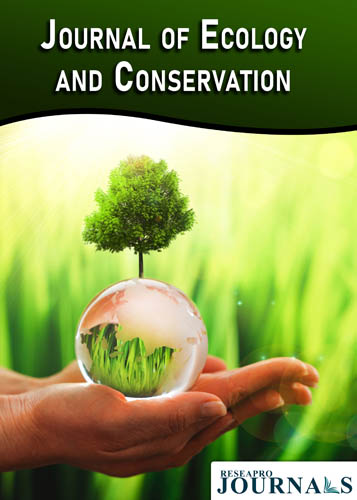
Journal of Ecology and Conservation
OPEN ACCESS
ISSN: 3048-5177

OPEN ACCESS
ISSN: 3048-5177

1Department of Forest Management Science, Faculty of Forest Sciences and Technology, University of Gezira, Wad Medani, Sudan
2Freelance, Gedaref State, Sudan
3Forests National Corporation, Ministry of Agriculture and Forests, Blue Nile Region, Sudan
Background: This study aimed to assess the influence of intensive harvesting on tree dendrometric parameters, seedling recruitment, and sapling density of identified tree species in Abu Gadaf natural reserved forest, Sudan.
Methods: We used a stratified sampling design for data collection, and the identified tree species were classified into five groups based on the main product utilized locally. Data were collected in 46 sample plots of 1000m2 systematically distributed across the upper and lower land sites of Abu Gadaf natural reserved forest. Analysis of variance, paired-samples t-test, and regressions in JAMOVI and Minitab were performed for data analysis.
Results: Findings revealed that tree-producing gum and edible fruits have small diameters compared to fodder and building pole-producing ones. Although Acacia polyacantha and Acacia seyal have larger mean diameter in the lowerland sites, Sterculia africana and Sterculia setigera displayed the inverse pattern with significant differences between sites (F1, 45=102.7 and p<0.01; F1, 45=108.3 and p=0.01; F1, 45=120.2 and p=0.03, F1, 45=111.2 and p=0.02, respectively). Moreover, the mean volume of Anogeissus leiocarpus, Balanites aegyptiaca, Terminalia brownii, and Sclerocarya birrea in upperland sites was twice, three, and five times equal to that of lowerland ones, respectively.
Conclusion: We concluded that intensive harvesting severely affected fodder, edible fruit, and gum-producing trees in the reserve and reduced their populations. We further recommend an introduction of the Taungya system concept for the restoration of the degraded sites.
Received 25 August 2023; Revised 18 October 2023; Accepted 25 October 2023
1Department of Forest Management Science, Faculty of Forest Sciences and Technology, University of Gezira, Wad Medani, Sudan
2Freelance, Gedaref State, Sudan
3Forests National Corporation, Ministry of Agriculture and Forests, Blue Nile Region, Sudan